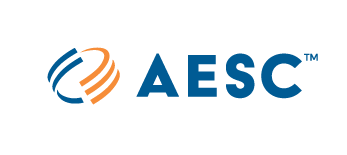Utilities / municipalities
Part of SEM includes building a cross-disciplinary energy team. Requiring and incentivizing team formation and reporting increases progress toward SEM goals and builds relationships with numerous team members at all levels of an organization. This team building connects finance, asset management, facilities, and resident services staff around energy-focused priorities, which can provide a vehicle to catalyze, support, and sustain the benefits of non-SEM incentive programs, while simultaneously enhancing organizational diversity, equity, and inclusion (DEI) efforts.
Catalyze: In all cases of prior MFSEM experience, participants have taken advantage of one or more non-SEM program offerings in the first year of participation, such as direct install measures in residential units, common area lighting retrofits, central hot water electrification, and weatherization projects.
Support: As you engage with SEM participants, you build trust and rapport with both staff and residents, which can positively benefit other program offerings. For example, thinking of a smart thermostat program for multifamily? SEM participants are a captive audience, can help with installation rates and help sustain savings, especially with unit turns and new residents long after the initial installation project is complete.
Sustain: Ongoing SEM engagement helps educate and empower employees to sustain the benefits of upgrades. Have you ever celebrated a direct install project only to return to the property soon after and find the stock room contains only incandescent bulbs for replacements and unit turns? Engaged SEM participants are well-versed with purchasing and replacement policies and practices and can keep an eye out to prevent this oversight. Benchmarking, energy performance tracking, and an ongoing focus on O&M are important cornerstones of SEM; therefore, SEM participants can help track and celebrate the benefits of other program offerings and focus on ongoing maintenance of new equipment and systems.
There seems to be a trend of utilities within jurisdictions with benchmarking and performance requirements funding accelerator or early adopter programs, some of which include SEM-like enhancements. This is reassuring since coaches can help organizations improve and sustain performance over time.
Synergize with DEI efforts: Many practitioners in the utility world are (finally) acknowledging an urgency for rapid growth and continuous improvement related to DEI outcomes in energy program work. Thankfully, this is a time of abundant sharing and outpouring of resources, lessons learned, frameworks, and more.
SEM coaches walk and talk continuous improvement and instill a curiosity among participants to identify where an organization and its buildings are on an energy management continuum. They can help identify where an organization is heading, how to bridge that gap, and remind teams to rinse and repeat. This process, coupled with the mantra of “you can’t manage what you don’t measure” provides a framework that energy coaches, who are already working as change agents, can utilize for simultaneous and synergistic DEI efforts.
Key utility / municipality considerations
- Consider community needs – multiple programs have focused initial efforts to serve affordable multifamily housing first, with consideration to extend the offering to market rate housing in the future.
- Activate cross-program collaboration from the beginning – our experience is that SEM participation increases participation in other utility programs, so prior to launch, introduce program representatives and establish mechanisms for cross-pollination and resource sharing.
- Partner, and compensate appropriately; this includes with community-based and workforce development organizations, DEI experts, and non-energy utilities.
- Embrace the workforce development opportunities, including credentialling organizations, such as Building Operator Certification, which just launched a Multifamily version: https://www.boccentral.org/multifamily.
- Could Strategic Utility Management be the next frontier? Consider co-funding opportunities with water and sewer utilities to further catalyze savings for MFSEM participants and their residents.
- Who pays? The non-energy benefits (NEBs) can potentially exceed the energy benefits, so consider strategic partnerships and co-funding opportunities.
- Marketing: you have a captive audience of owners and operators, all who can help directly distribute educational, engaging, and rewarding materials to residents.Health care: if you serve affordable housing, consider partnering with mission-driven health care
Conclusion
SEM has been a driving force for continuous energy improvements within buildings, agencies, and governments. SEM for multifamily was, in the past, labelled as a model that was too difficult to implement successfully. However, the benefits of expanding the SEM model to this underserved sector are too good to ignore. Residents can experience lowered utility bills, increased thermal comfort in their homes, and renewed engagement with staff. Owners can expect immediate benefits such as team building and project planning assistance without upfront capital investments. Utilities and municipalities can utilize MFSEM to strengthen a portfolio of energy management programs within their territories, expanding on key initiatives such as DEI.
The return on investment for a well-positioned, well-maintained, and well-executed MFSEM program will guarantee that such an offering will be here to stay. The multifamily sector was not originally top of mind for SEM initiatives; however, the practical benefits of implementing MFSEM are becoming harder to ignore.



